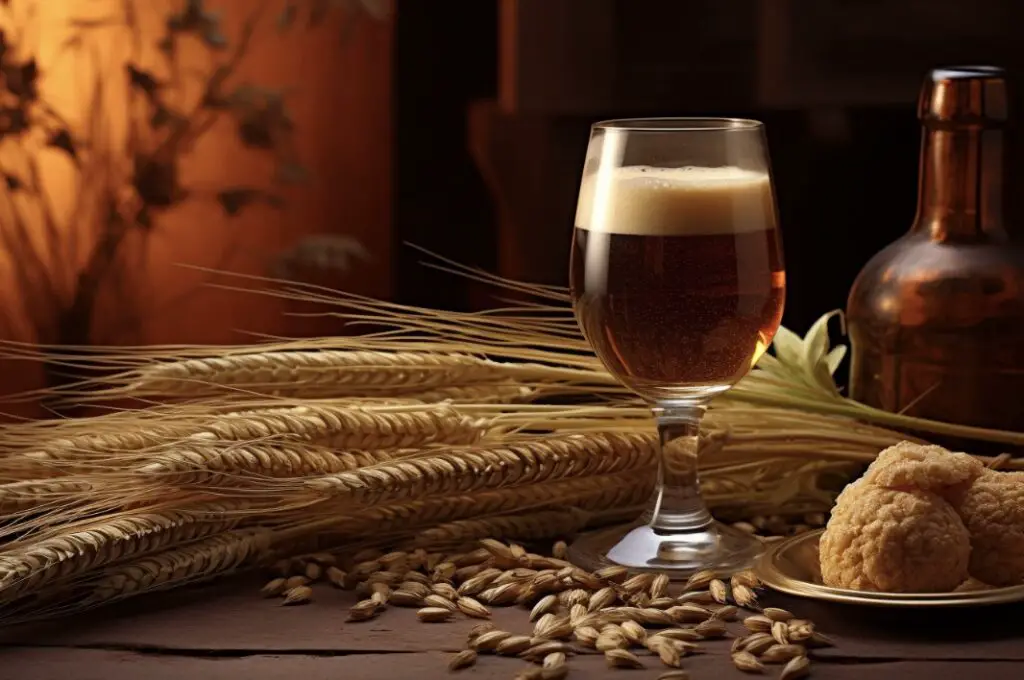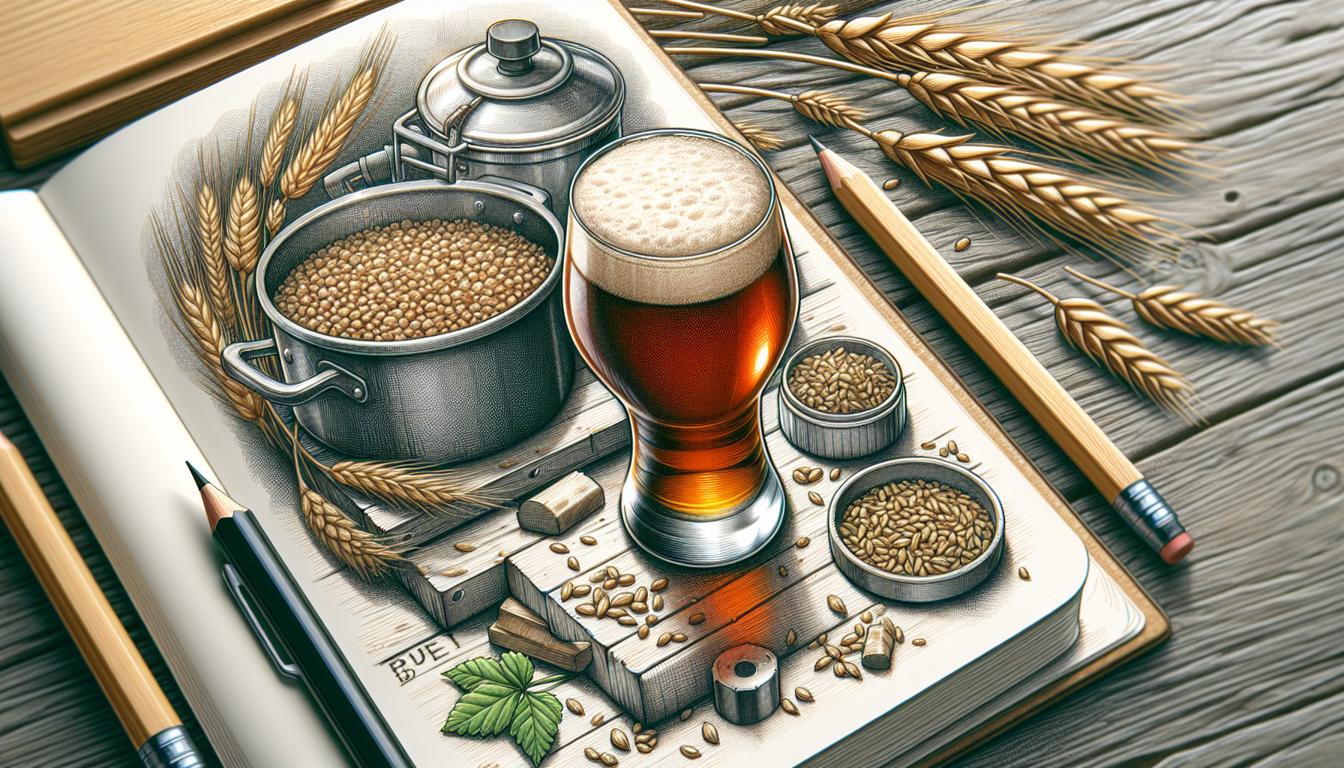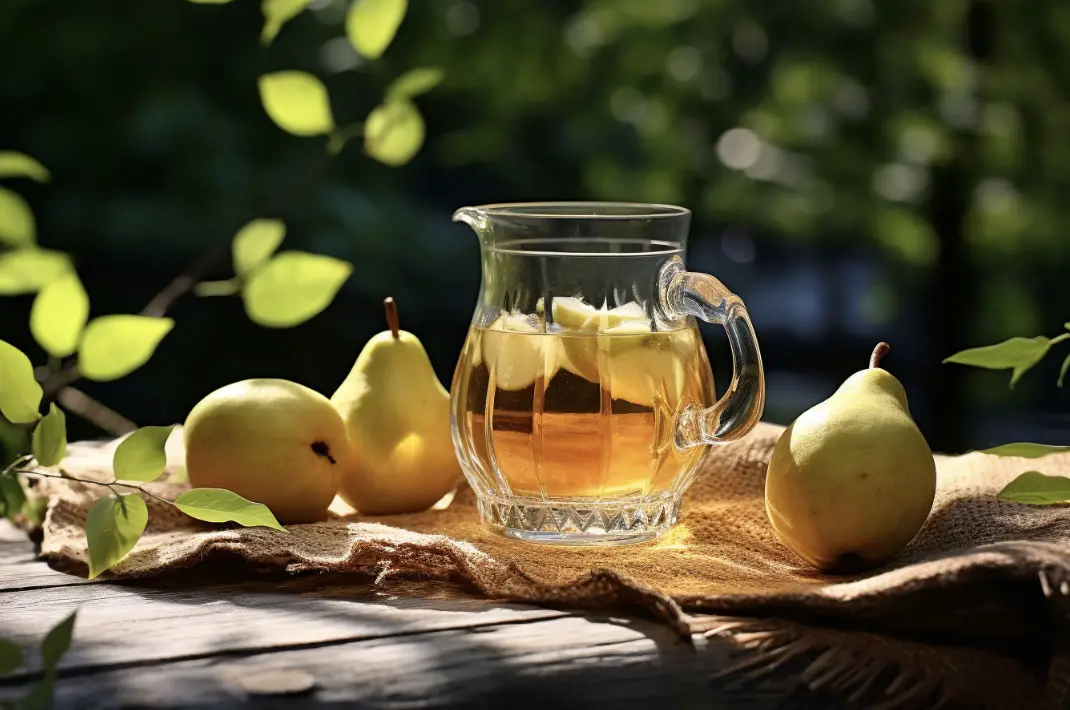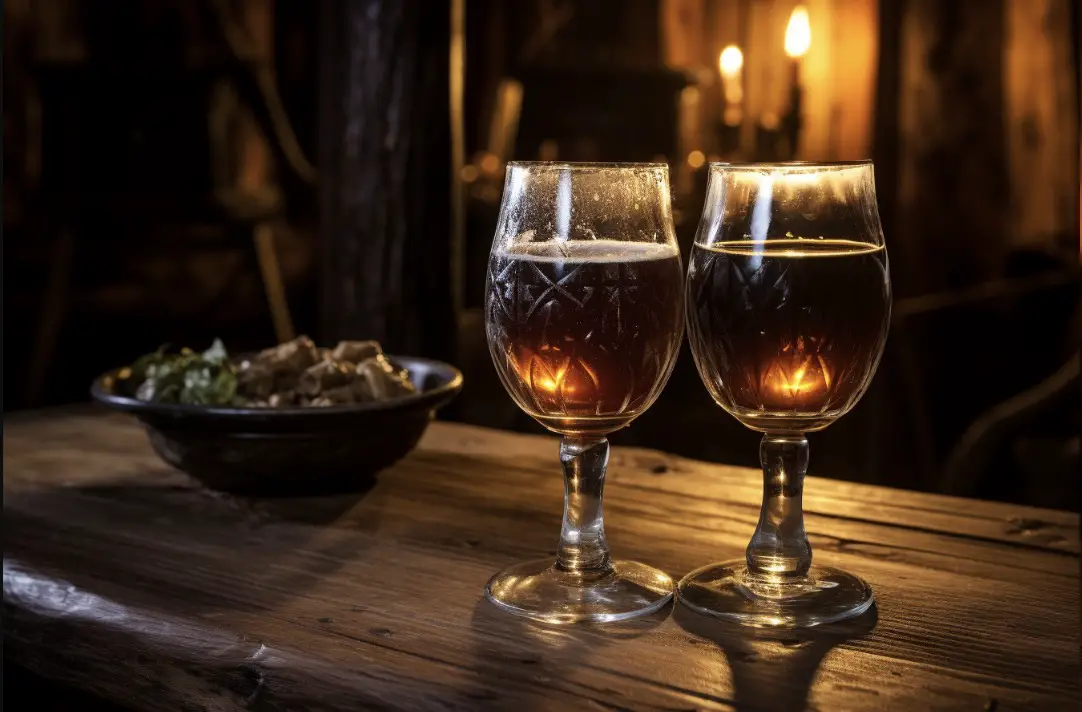Barleywine, often referred to as “the king of beers,” is a strong and complex beer style that has been enjoyed by beer enthusiasts for centuries.
With its rich malt character, intense hop bitterness, and high alcohol content, Barleywine is not for the faint of heart. But for those who appreciate the depth and complexity of this beer, the rewards are truly exceptional.
In this masterclass, I will guide you through the process of brewing your own Barleywine, sharing my personal anecdotes and expert advice along the way.
We’ll start with a brief history and key characteristics of this beer style before diving into the nitty-gritty of the brewing process. So grab a pint of your favorite Barleywine, sit back, and let’s get started!
A Brief History and Key Characteristics
Barleywine originated in England in the late 18th century, and it was initially brewed to be a strong and robust beer that could be aged for long periods of time. The name “Barleywine” itself is a nod to the beer’s high alcohol content, which often rivals that of wine. Over the years, the style has evolved, and today we have two main variations: American Barleywine and English Barleywine.

American Barleywine tends to be more hop-forward, with a prominent hop bitterness that balances out the rich malt sweetness. It often showcases American hop varieties, such as Cascade or Centennial, which impart citrusy and piney flavors. American Barleywines can range in color from deep amber to dark brown, and their alcohol content can reach up to 12% or higher.
English Barleywine, on the other hand, is known for its malt-forward character. It has a deep amber to copper color and a complex malt profile that includes flavors of toffee, caramel, and dark fruits. English Barleywines have a more restrained hop bitterness compared to their American counterparts, allowing the malt flavors to shine. The alcohol content of English Barleywines typically falls within the 8-12% range.
Now that we have a better understanding of the history and key characteristics of Barleywine, let’s dive into the brewing process and create our own masterpiece.
Brewing Process
Ingredients
To brew a Barleywine, you’ll need the following ingredients:
– Malted Barley: Choose a high-quality base malt, such as Maris Otter for English Barleywine or American 2-Row for American Barleywine. You’ll also want to include specialty malts, such as Crystal or Munich, to add complexity to the beer’s flavor profile.
– Hops: For American Barleywine, use American hop varieties with high alpha acid content, such as Cascade or Centennial. For English Barleywine, opt for English hop varieties like East Kent Goldings or Fuggles. The hops will provide balance to the beer’s malt sweetness and contribute to its aroma.
– Yeast: Select a yeast strain that can handle the high alcohol content of Barleywine. Look for a yeast that has a high alcohol tolerance and can produce complex flavors. English Ale yeast strains or American Ale yeast strains are good choices.
– Water: Pay attention to the water chemistry when brewing Barleywine. The water should have a balanced mineral content to enhance the malt and hop flavors. Consider adjusting the water profile to match the style you’re aiming for.
– Additional Ingredients: Some brewers like to add additional ingredients to their Barleywine, such as oak chips, spices, or even fruits. While these are optional, they can add another layer of complexity to the beer.
Mash and Boil
1. Mashing: Start by mashing your grains at a temperature that promotes the extraction of fermentable sugars. For Barleywine, a single infusion mash at around 152°F (67°C) for 60-90 minutes is a good starting point. This will give you a well-attenuated beer without sacrificing body and mouthfeel.
2. Boiling: Once you’ve completed the mash, transfer the wort to your brew kettle and bring it to a rolling boil. During the boil, add the hops according to your desired bitterness level. For American Barleywine, aim for a higher IBU (International Bitterness Units) range of 60-100, while English Barleywine typically falls between 30-60 IBUs.
3. Hop Additions: When adding hops, consider a combination of early, middle, and late additions to achieve a balanced bitterness and hop flavor. Save some hops for dry hopping during fermentation to enhance the beer’s aroma.
4. Fermentation: After the boil, cool the wort and transfer it to your fermentation vessel. Pitch the selected yeast strain and monitor the fermentation temperature carefully. Barleywine fermentation can be vigorous, so be prepared for a healthy fermentation and consider using a blow-off tube to avoid any messy blowouts.
5. Aging: Once fermentation is complete, you have two options: bottle the beer or age it in secondary fermentation for several months or even years. Barleywines benefit from extended aging, as it allows the flavors to mellow and meld together. If you choose to age your Barleywine, make sure to use airtight and oxygen-free containers.
Conclusion
Brewing a Barleywine is a labor of love that requires patience and attention to detail. The result, however, is a beer that rewards those who appreciate its complexity and depth.
Whether you prefer the hop-forward American Barleywine or the malt-driven English Barleywine, the key to success lies in selecting high-quality ingredients, paying attention to water chemistry, and allowing for proper aging.
So, gather your brewing equipment, prepare your ingredients, and embark on the journey of brewing your own Barleywine. And remember, brewing is an art, and experimentation is encouraged. Don’t be afraid to put your personal touch on this classic beer style. Cheers to brewing the perfect Barleywine!






Leave a Reply
You must be logged in to post a comment.